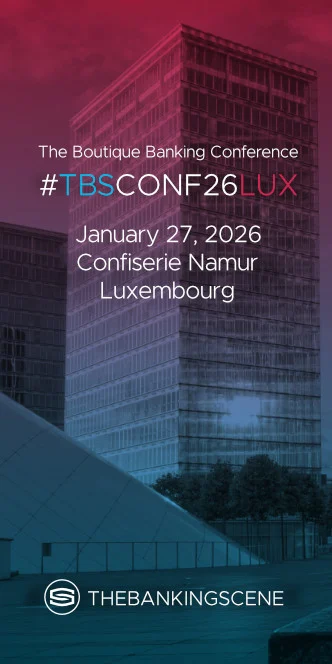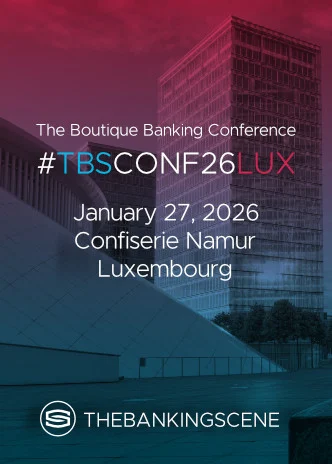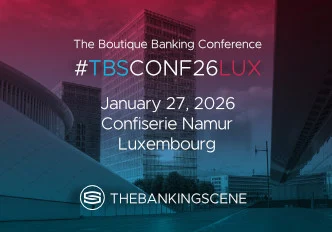
Insights & Opinions
The Future of Consumer Finance – 5 Predictions and Their Challenges - 2055 Outlook
Thu, 30 Oct 2025


By 2055, consumer finance will be radically different, at least, that’s what many visionaries claim. From AI-driven credit models to modular money and tokenised assets, the horizon is full of promise, as I learned in a session at Open Banking Expo, by Marko Sjoblom, Founder and CEO of Fiinu Plc (LSE: BANK), a publicly traded fintech group, including Fiinu Bank.
But how likely are these futures, and what stands in the way? Because obviously, asking someone in the consumer finance space to predict the future of consumer finance needs to be taken with a pinch of salt, to divide solid predictions from wishful thinking. But it was a great story, with a list of inspirational insights worth sharing with the community.
In this article, I examine the boldest predictions while critically analysing their feasibility and impact on banks, fintechs, and consumers.
Prediction 1: Finance will be modular, unbundled, and embedded everywhere
Traditional product lines, like overdrafts, credit cards or mortgages, will be decoupled from banks and offered on demand via APIs. Marko calls the concept “plug-in overdrafts,” and by 2055, he expects that financial services could be accessed through your car dashboard, smart table, or gaming console through embedded finance technologies. Each function: risk, payment, KYC, ID, becomes a modular service in an open ecosystem.
Challenge: Can unbundling preserve trust, security, and regulatory coherence?
Unbundling assumes strong interoperability, real-time APIs, seamless compliance, and uniform consumer protection across multiple layers and parties. But banking is not ride-sharing, even though the rise of embedded finance and open banking is currently laying the foundations for more interconnectivity.
Can a patchwork of providers replicate the resilience and regulatory rigour of licensed banks? Who is liable when things go wrong, especially across borders or platforms?
According to a McKinsey study, fragmentation could lead to increased compliance burden and customer confusion, unless re-bundled under strong orchestration layers or ecosystem gatekeepers.
Unbundling may define the back-end infrastructure of finance, but the front-end must still offer coherence, trust, and simplicity. This opens an opportunity for new orchestrators, but also a role for banks to redefine their relevance not as monoliths, but as trusted curators in a modular world.
Prediction 2: AI will replace traditional underwriting and credit scoring
By 2055, AI systems will power probabilistic predictions across risk, lending, fraud, and customer personalisation. Consumers may no longer have static credit scores, but fluid reputational profiles built on thousands of behavioural signals. Risk pricing will adapt in real time, and decisions will be taken by systems, not underwriters. It will depend on more than just financial indicators; it also includes social scores, etc.
Challenge: Is society ready for “black box” credit?
AI risk models are powerful, but opaque. Explainability, fairness, and bias remain significant issues. A 2024 paper on AI in lending warns that machine learning can embed and scale bias, especially against low-income or underbanked users. Regulatory frameworks such as the EU AI Act and US consumer protection laws may require “human-in-the-loop” accountability, slowing the pace of full automation.
Moreover, explainable AI remains underdeveloped for complex consumer finance models. Will consumers accept AI-driven decisions they don’t understand?
On top of that, I’m not sure we should move into too many alternative data points, like reputational profiles, which could create new forms of financial exclusion for people with a lower digital footprint, etc.
So, although I am convinced that AI will transform credit, I see hybrid models blending human oversight, ethics, and technology as key.
Prediction 3: Super apps will be replaced by a finance app store
The rise of WeChat and Revolut sparked the vision of “super apps” as the future of finance. But Marko argued the opposite: modularity will lead to an app store model, where users pick best-in-class services rather than bundles, loosely linked to prediction 1. Financial services will be “omniplatform”, not locked into one app or interface.
Challenge: Do consumers want fragmentation, or convenience?
In theory, unbundling gives choice. In practice, many users prefer a single interface, single brand, and single support system, especially in complex industries like financial services. Trust, convenience and brand affinity matter, but also explainability and transparency, and that is where mixing all kinds of services into one may be hard to digest for the average consumer, unless by 2055, the AI agents take care of all that.
Even PSD2 uptake has been slow in many EU countries, because of limited consumer pull. Without strong use cases and value incentives, many consumers may default to super apps or Big Tech platforms after all.
The finance of the future may be modular underneath, but consolidated around a few trusted platforms. Banks can remain central to the proposition if they deliver seamless experiences and own the customer relationship.
Prediction 4: Borrowing will follow us into old age
With ageing populations, retirement will no longer mean debt-free living. The elderly will have mortgages bundled with healthcare, streaming pensions, and perhaps tokenised assets to release equity. Products will shift from front-loaded debt to lifelong financial wellness.
Challenge: Are banks equipped to design for 70-year-old borrowers?
Longevity risk, declining cognitive ability, and intergenerational wealth transfer complicate elder finance. Ethical risks around misselling, affordability and informed consent will be heightened. Regulators will increase scrutiny. The UK’s Financial Conduct Authority already highlights vulnerabilities in later-life lending.
Moreover, current credit models are designed for short-to-medium term incomes. How do you underwrite a 30-year-old health-linked mortgage for a 70-year-old in a volatile care system?
Also, from a more human perspective, are these elderly willing to risk leaving debt obligations to their children and grandchildren, or will banks also find solutions to avoid that as part of new credit solutions?
Yes, financial products will stretch into old age, but beyond the technical possibility, we’ll also need to consider the human and social desirability of them.
Prediction 5: Tokenisation will unlock instant, fractional liquidity
Tokenised assets, from pensions to real estate, will enable consumers to pledge, sell, or trade fractions of their holdings in real time. This solves the “asset rich, cash poor” paradox. Need cash for your health care? Tokenise your living room, pension, or salary stream.
Challenge: Is there demand, infrastructure, and trust?
Tokenisation has huge potential but remains a niche. Regulatory uncertainty, lack of standards, custody issues and valuation risk limit uptake. Indeed, 2055 is still far away, and the world evolves quickly. Yet, according to the BIS, most tokenisation pilots remain restricted to wholesale finance or tightly controlled environments.
Retail consumers are also sceptical: tokenising your home or pension is a far more complex proposition than buying crypto. Without liquidity, strong custodians and legal certainty, tokenisation may struggle to go mainstream.
Tokenisation may become core to capital markets, but its consumer promise depends on solving for custody, liquidity and trust, or in short: supply and demand. And who is waiting to buy one’s living room? I just don’t think it will happen overnight.
Final Thoughts: Predicting 2055 by Building 2030
What becomes clear is that the boldest ideas in finance are not sci-fi: they’re already taking shape. But their success depends on execution, trust, regulation, and social acceptance. For banks and fintechs, the challenge is to balance:
- Innovation with ethics,
- Modularity with trust,
- Technology with transparency,
- Agility with inclusion.
To be relevant in 2055, we must make the right choices by 2030.
The Banking Scene: Director's Cut
This was one of 3 sessions that Rik and Andrew discuss in the Director's Cut Debrief session found below, sharing insights from the Open Banking Expo event in London and digging into some of the points raised above, along with discussing insights from an Open Banking panel with views from Brazil, Saudi Arabia, Australia and the UK and debating the similarities between fraud and marketing 🫣.
You can watch the video discussion below or find us on your favourite podcast platform here (don't forget to subscribe!).



